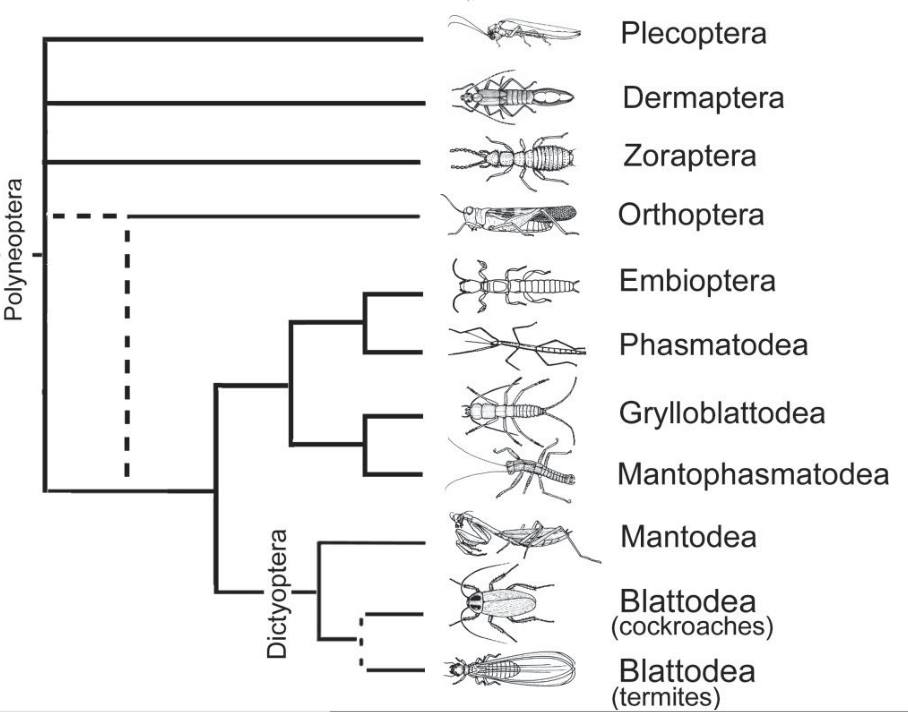The members of Polyneoptera Research Group deal with ecology, ethology, species conservation, phylogeny and taxonomy of Orthoptera and Dermaptera plus partially Mantodea and Zoraptera). Recently, we solve selected questions in food biology and behavioral ecology of groundhoppers (Orthoptera: Tetrigidae) and some other groups of Orthoptera. At the same time, our interest concerns a distribution of Orthoptera in an industrial landscape and taxonomy of selected groups of Dermaptera.
What does Polyneoptera mean?
The term Polyneoptera means the group (Subdivisio) of insects that includes orders: Plecoptera (stoneflies), Mantodea (mantids or praying mantids), Blattodea (cockroaches or roaches; this order includes formerly isolated order Isoptera – termites), Grylloblattodea (grylloblattids, ice crawlers or rock crawlers), Mantophasmatodea (heelwalkers), Orthoptera (grasshoppers, locusts, katydids and crickets), Phasmatodea (phasmids or stick-insects), Embioptera (embiopterans or webspinners), Dermaptera (earwigs), a Zoraptera (zorapterans or angel insects). The group Polyneoptera, together with groups Paraneoptera and Holometabola (Oligoneoptera) form the divisio Neoptera, which contains the most of recent insect orders.


